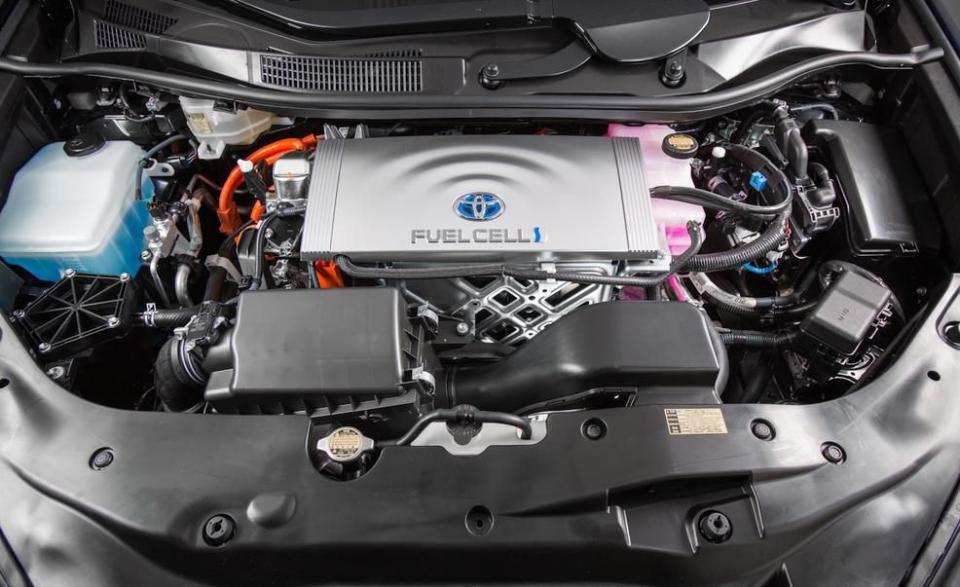A Hydrogen-Station Fire in Norway Doesn't Mean the Fuel Is Inherently Unsafe

A hydrogen-refueling station exploded outside Oslo, Norway, earlier this week, prompting a temporary shutdown of the nation's few hydrogen stations and an investigation. No one was hurt.
Reportedly, Hyundai and Toyota have stopped selling hydrogen fuel-cell vehicles in Norway while the investigation continues.
Hydrogen ignites easily and burns with a nearly invisible flame, which requires specialized systems to detect and prevent leaks, but is widely considered safe.
Despite pro-EV blogs foreshadowing hydrogen's demise as an alternative fuel, consider that Norwegian authorities are still investigating Monday's explosion at a vehicle-refueling station outside Oslo. That means, as with a fire at a gasoline station or a battery-electric car burning down a garage, no one yet knows the unique factors that triggered the ignition.
Initial news reports from Norway were that the explosion was large enough that residents across Sandvika, about 10 miles west of Oslo's city center, could hear it. No injuries have been documented. The fueling company Uno-X promptly closed all three of its stations, and it is likely that Norway's remaining seven stations will be closed until the investigation concludes. Other reports claim that Toyota and Hyundai have halted sales of their fuel-cell vehicles in Norway, but if true, sales of new hydrogen fuel-cell vehicles in Norway aren't much lower than they are across Southern California, where they're in the hundreds at most, and the publication Norway News in English reports there are currently only about 170 privately owned hydrogen fuel-cell vehicles in that country.

According to the U.S. Department of Energy and the National Academy of Engineering, hydrogen can readily ignite in a much broader range of fuel-to-air concentrations than other gases. Compared to gasoline vapor (1 to 8 percent) and natural gas (5 to 15 percent), hydrogen can ignite at a fuel-to-air concentration between 4 and 75 percent. It also requires 12 times less energy to ignite than gasoline vapor, so heat sources or the smallest of sparks can turn hydrogen into a bomb. As the lightest element, hydrogen disperses into open air far more rapidly than other gases, which negates some of its combustibility dangers. But no one, even 82 years after it exploded over New Jersey, has ever forgotten the Hindenburg airship.
The pro-EV website Electrek predicted immediate doom: "Does this spell the end of fuel cell hydrogen vehicles as a 'zero-emission' alternative?" Another such site, InsideEVs, wrote its opening line as if it were Pearl Harbor: "A hydrogen refueling station exploded and stood in flames yesterday in Sandvika, Norway, which could make June 10, 2019, the day when the perception about hydrogen stations and hydrogen fuel cell cars, in general, will forever change."
This doesn't mean hydrogen can't be handled safely. It has been, it is, and continues to be a viable fuel for automakers and all sorts of heavy industries seeking to reduce emissions and comply with regulations that are limiting usage of fossil fuels. In March, a city bus exploded in Sweden after its natural-gas tanks struck the top of a tunnel opening. Boeing, to this day,has still never solved the root cause of lithium-ion battery fires, in flight, on its 787 Dreamliner jets (among other modifications, its major solution was enclosing the batteries in a fireproof box). Any fuel, regardless of its storage and chemistry, has inherent risks of flammability, and explosions like the one in Norway must be taken seriously. But to use a single incident to derail hydrogen as a transportation fuel won't help anyone.
('You Might Also Like',)
